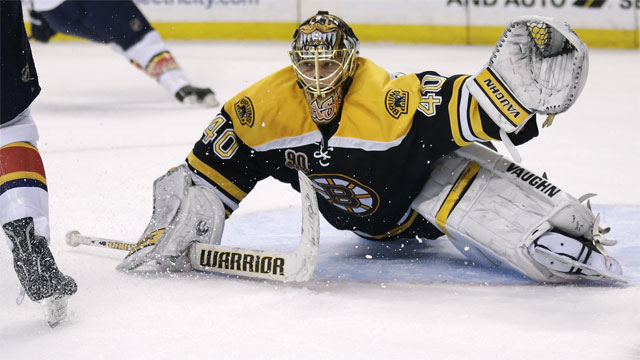As analytics continue to impact the NHL, I am intrigued that the data community continues to add layers to what impacts offensive production. One look at extraskater.com will lead you to a statistical wonderland—assessing skater value through zone starts, linemates, quality of competition, shooting percentage, shots created, shots missed, shots blocked, even by isolating performance with and without teammates. It has allowed us to appreciate skills that don’t show up in a traditional box score, while giving us a better understanding of what wins hockey games.
But goaltender evaluation relies on a 30-year-old statistic that simplifies results to their rawest form. Every shot is equal. Every save is equal. Divide the saves by the shots. You want advanced goaltender data? Remove power plays.
All the rest? Noise.
The Shot Quality Project is an attempt to prove that all the rest isn’t noise; to provide extra layers of data to help better identify true goaltending talent. I regularly sit down with a professional goalie coach and am reminded how much I still need to learn about the position. My goal is to apply the expert technical knowledge that has changed the position from reflex reliant to technique driven while using advanced data to identify market inefficiencies.
Two of the larger individual data sets I have belong to Carey Price and Tuukka Rask. They were the first and second goalies drafted in 2005 and are entering their goaltending prime. I have Rask’s numbers from 2010-11 through ’12-13 and Price’s for 2011-12 and ’12-13. Both are recognized by goaltending coaches as elite, but only one looks it statistically when measured against his peers.
The surface data suggests Rask is a class above Price. If we compare and contrast overall save percentage, even-strength save percentage and short-handed save percentage, Rask is 12 to 13 goals better per 1,000 shots in each. Even looking slightly below the surface to shots per game and shot distance, it is understandable why we struggle to navigate through the noise. Price faces 28.41 shots per 60 minutes, while Rask sees 29.68. Price also has a slightly more difficult workload with the average shot coming from 34.39 feet compared to Rask’s 34.71.
The key is to look deeper. To do so, I first created a heat map showing shots-faced per 60 minutes using shot coordinates. Then I broke down shot quality into four categories, I referenced Price and Rask’s results in these categories when assessing Toronto’s James Reimer two weeks ago.
Based on their averages I created an expected workload per 1,000 shots.
While the distance data indicates that the difference between the two was negligible, these maps indicate that Price faces significantly more shots in the home plate area. In order to present a clearer picture I took their per-60-minute data and cancelled out all common shots. I then mapped the differential to illustrate the difference in their workload when it is isolated.
When removing the common shot locations, it’s obvious that Price has been left more exposed to the slot area than Rask. One thousand shots represent roughly a 33-to 35-game sample, so Price has faced, on average, 52 more shots from the slot area than Rask. The Bruins do a good job of forcing shots to the exterior and taking away passing lanes, which we can see in the graphic below.
Once again when removing common data points we can see the higher quality opportunities that Price has been facing: 53 extra transition shots per 1,000 shots. To put it into perspective, a league average defence surrenders 68 per 1000, 28 fewer than Price and 25 more than Rask. This is significant because if we replace 53 clean-shots faced with an expected .951 save percentage with the league-average save percentage on passes/transition shots of .693, it results in an additional 13 goals to Rask’s expected total. When we consider that Rask’s transition save percentage is .657 the number increases to 15 goals. I continued to apply the same theory to the remaining categories.
The same type of pattern emerges when we look at deflections. Rask is above average on deflected pucks, but if we replace 21 clean shots with 21 deflected shots his current averages would increase his expected goal total by another four goals. That would have a big effect on how Rask is perceived. For example, .019 represented the difference between Antti Niemi—a Vezina finalist in 2013—and Ondrej Pavelec, the king of the snow angels.
The last category is rebounds faced. Rask looks to have a slightly more difficult workload based on the location data even though he has faced two fewer shots, but the goal differential is negligible.
Statistical Noise? Maybe.
If it is just noise, we must acknowledge that Tuukka Rask and his career .929 save percentage are on track to become—by that statistic—the greatest goaltender in the history of the game. If Rask can maintain even a league average save percentage his next 100 games, he will bump Dominik Hasek from the top spot. Is he better than Dominik Hasek?
Maybe. Or maybe shot quality actually exists.
The project continues.






